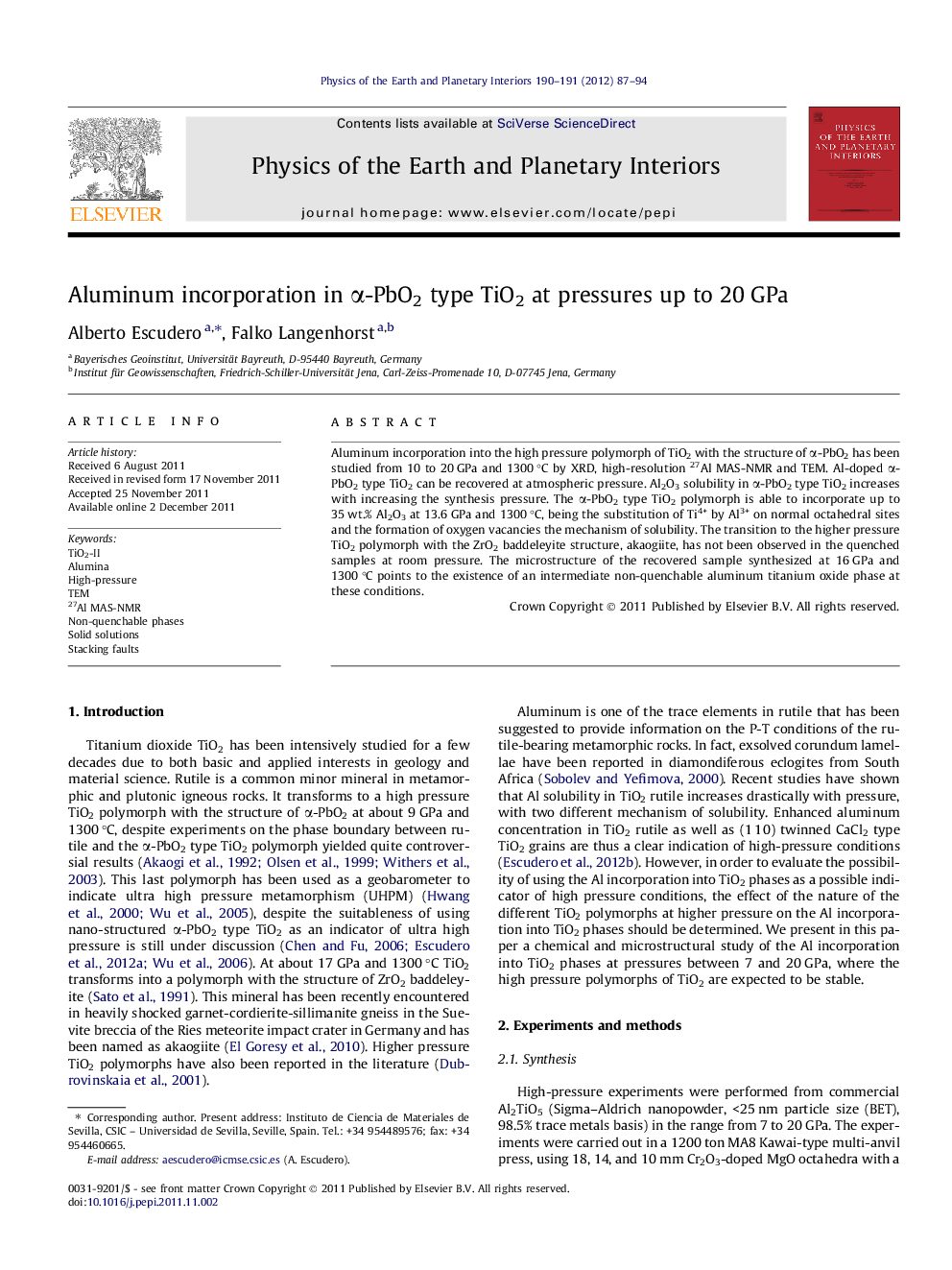| Article ID | Journal | Published Year | Pages | File Type |
|---|---|---|---|---|
| 4741819 | Physics of the Earth and Planetary Interiors | 2012 | 8 Pages |
Aluminum incorporation into the high pressure polymorph of TiO2 with the structure of α-PbO2 has been studied from 10 to 20 GPa and 1300 °C by XRD, high-resolution 27Al MAS-NMR and TEM. Al-doped α-PbO2 type TiO2 can be recovered at atmospheric pressure. Al2O3 solubility in α-PbO2 type TiO2 increases with increasing the synthesis pressure. The α-PbO2 type TiO2 polymorph is able to incorporate up to 35 wt.% Al2O3 at 13.6 GPa and 1300 °C, being the substitution of Ti4+ by Al3+ on normal octahedral sites the mechanism of solubility. The transition to the higher pressure TiO2 polymorph with the ZrO2 baddeleyite structure, Akaogiite, has not been observed in the quenched samples at room pressure. The microstructure of the recovered sample synthesized at 16 GPa and 1300 °C points to the existence of a non-quenchable aluminum titanium oxide phase at these conditions.
► Aluminum incorporation in α-PbO2 type TiO2 increases with increasing the synthesis pressure. ► Al-doped TiO2 rutile transforms into the α-PbO2 type TiO2 polymorph between 7 and 10 GPa. ► The Akaogiite polymorph is not quenchable and reverts to stacking faults decorated α-PbO2 type TiO2 when decompressing. ► A possible non-quenchable aluminum titanium oxide phase exists at 16 GPa and 1300 °C.
